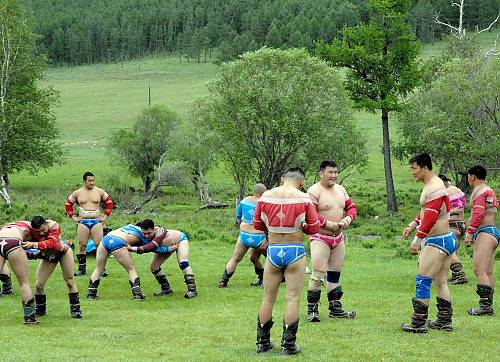The famous Mongolian Naadam Festival. celebrated every year from 11 to 13 July across Mongolia that focuses on three traditional games: horseracing, wrestling and archery, is indeed a fun packed event.
Mongolian Naadam is inseparably connected to the nomadic civilization of the Mongols, who have long practiced pastoralism on Central Asia’s vast steppe.
Oral traditions, performing arts, national cuisine, craftsmanship, and cultural forms such as long song, Khöömei overtone singing, Bie biyelgee dance and Morin khuur fiddle also feature prominently during Naadam.
Mongolians follow special rituals and practices during the festival, such as wearing unique costumes and using distinctive tools and sporting items.
Festival participants revere the sportsmen, sportswomen, and children who compete, and winners are rewarded titles for their achievements. Ritual praise songs and poems are dedicated to the contestants in the events.
During the event, everyone is allowed and encouraged to participate in Naadam, thus nurturing community involvement and togetherness.
The three types of sports are directly linked with the lifestyles and living conditions of the Mongols and their transmission is traditionally undertaken through home-schooling by family members, although formalized training regimens have recently developed for wrestling and archery.
The rituals and customs of Naadam also accentuate respect for nature and the environment.
Events, (11 July, Naadam Festival Day)
Horse racing: The most impress

ive spectacle is surely the horse racing. The horses cover different distances according to their age. Azarga (stallions) 28km, Ikh nas (horses more than 5 years old) 30km, Soyolon (5-year olds) 25km, Khyazaalan (4-year olds) 22km, Shudlen (3-year olds) 20km and Daaga (colts to 2 years old) 15km.
There are no limits on the number of horses participating; usually 200-600 horses in each race. The five winning horses are honored with a cup of mare’s milk (airag) on their neck, a khadag (respectful blue scarf), and a medal.
Wrestling:
The 512 wrestlers fight in the stadium, for the prestigious title “State Titan”. Both the “Titan” himself and the trainers have the opportunity to choose partners during the first few rounds, thus reducing the number of less experienced wrestlers early on and creating more excitement for the final matches on the second day. The rules are very simple: The wrestling area is unrestricted; there are no weight-classes and the one who touches the ground any part of the body, other than the feet, has lost. The winner continues to the next round. The loser has to stand under the wings of the proud winner. The wrestlers wear tight pants and a small vest with arms across the shoulders, which barely cover their well-trained bodies.

Archery:
Mongols are almost born with archery skills, an integral part of the nomad’s lifestyle. From very childhood, such qualities as perfect eyesight, measurement, patience, and strength are nourished to develop a good archer. Mongolian bows are very tight ones so that it requires pure strength to stretch it out. As a rule, several teams of archers compete. Each team of 5-7 archers should hit 33 leather cylinders from a distance of 75 meters.










